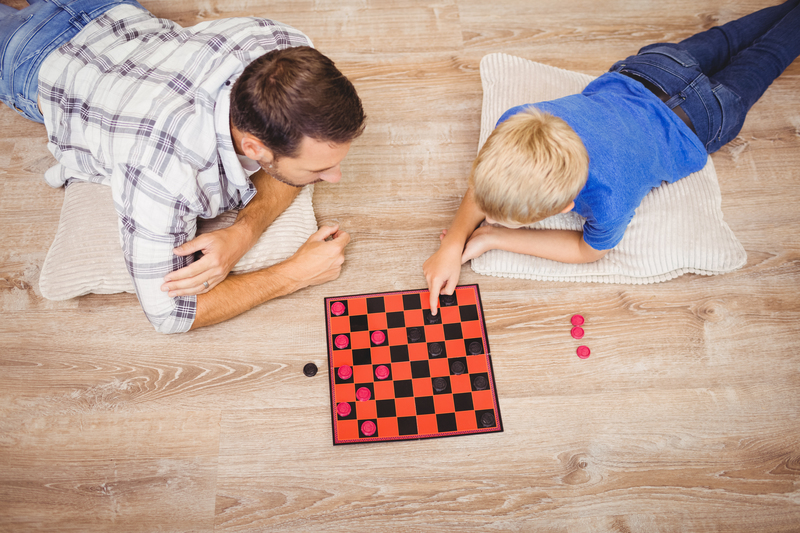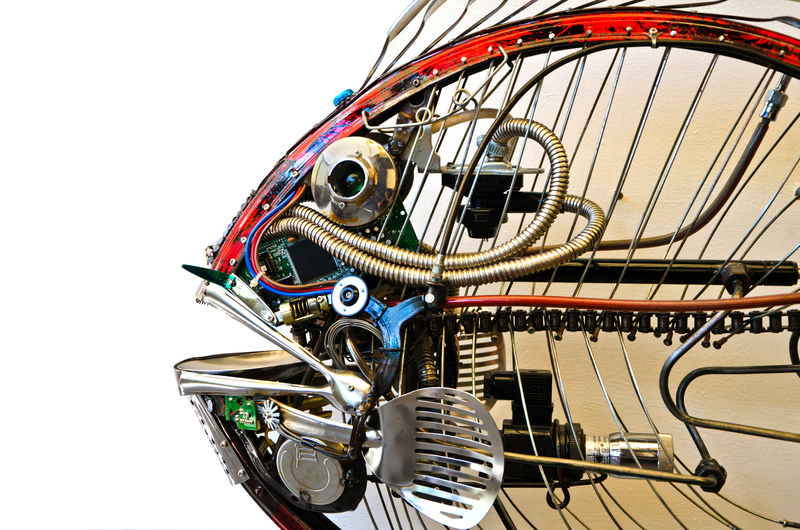Minimalist Living: The Power of Decluttering
Minimalist living has become a transformative lifestyle for people seeking more meaning and peace in their day-to-day existence. At the heart of this philosophy is the art of decluttering, a powerful process that encourages individuals to let go of excess and focus on what truly matters. In a world brimming with consumerism, advertisements, and material possessions, switching to a minimalist lifestyle is not just about having fewer things--it's about creating space for abundance in more meaningful areas of life. In this comprehensive guide, we'll explore the power of decluttering, its benefits, practical strategies, and why this movement has captivated millions around the globe.

What is Minimalist Living?
Minimalist living is a conscious decision to simplify your life by reducing clutter, distractions, and unnecessary possessions. This lifestyle movement emphasizes the idea that "less is more," encouraging people to keep only those items, relationships, and commitments that add real value and joy. Decluttering is often the first step towards adopting a minimalist life, as it creates physical, mental, and emotional space for growth and fulfillment.
- Clarity - Removing unnecessary items brings mental clarity.
- Freedom - Less stuff means more freedom to choose how (and where) you live.
- Purpose - By focusing on what truly matters, you live with more intention and purpose.
Core Principles of a Minimalist Lifestyle
- Intentionality: Every item and commitment should serve a clear purpose.
- Quality over Quantity: Choose fewer, higher-quality possessions for longevity and satisfaction.
- Mindful Consumption: Thoughtful purchasing and resisting material impulses.
- Value-driven Choices: Keep what aligns with your values and life goals.
Minimalist living is not about deprivation; rather, it's about making room for what really matters--whether that's travel, relationships, creative pursuits, or simply peace of mind.
The Psychological Impact of Clutter
It's well-documented that clutter has a profound effect on our psychological and emotional wellbeing. Scientific research suggests that excessive possessions and disorder can cause:
- Stress: Visual clutter increases cortisol, a stress hormone, making relaxation harder.
- Reduced Focus: A cluttered space leads to a cluttered mind, impacting productivity.
- Decision Fatigue: The more choices you face, the more mentally exhausted you get.
By embracing a minimalist home, you eliminate these triggers, creating an environment of calm and productivity. Decluttering your surroundings is an actionable way to welcome tranquility, joy, and improved mental health.
The Benefits of Decluttering
Adopting a minimalist lifestyle and harnessing the power of decluttering goes far beyond having a tidy home. The perks encompass every facet of one's life:
1. Boosted Productivity and Focus
With fewer items to distract you, it becomes easier to concentrate on important tasks. A clear workspace inspires clear thinking and improved efficiency.
2. More Time and Freedom
The less time spent organizing, cleaning, and maintaining stuff, the more freedom you gain to pursue passions, hobbies, and relationships.
3. Enhanced Mental Wellbeing
Decluttered environments contribute to reduced anxiety and a greater sense of control over your life, which can support better sleep and lower levels of depression.
4. Financial Savings
Decluttering reveals what you truly need. With mindful purchasing habits, you avoid unnecessary expenses, save money, and even make extra cash by selling unwanted items.
5. Sustainability and Eco-Friendliness
Minimalism naturally leads to eco-consciousness--buying less means less waste and lower carbon footprints. By curating your possessions, you contribute to a healthier planet.
Getting Started: Practical Decluttering Strategies
Ready to tap into the power of decluttering? Start small and build up to big changes. Here are step-by-step strategies for a successful minimalist journey:
Step 1: Set Clear Intentions
- Define your "why"--is it for peace of mind, more space, or better productivity?
- Set specific goals (e.g., "I want to create a minimalist bedroom" or "I want a clutter-free workspace").
- Visualize your ideal minimalist lifestyle and keep this vision as your motivation.
Step 2: The Sorting Process
- Take everything out of the space you're decluttering.
- Sort items into categories: Keep, Donate, Sell, Recycle/Trash.
- Ask yourself: "Does this add value or joy to my life? When was the last time I used it?"
Pro Tip: If you haven't used the item in over a year, it's probably time to let it go.
Step 3: Organizing What Remains
- Assign every item a designated place.
- Use organizers, bins, and shelves for streamlined storage, but avoid the temptation to over-store.
- Implement the "one-in, one-out" rule to prevent future clutter.
Step 4: Declutter by Category
- Try the Marie Kondo method: tackle items category by category (clothes, books, papers, miscellaneous, sentimental).
- Focusing on one type of item at a time keeps you from feeling overwhelmed.
Step 5: Regular Maintenance
- Schedule monthly or quarterly decluttering sessions to maintain minimalist order.
- Keep a donation box somewhere accessible--drop in unused items as you find them.
Decluttering Techniques from Minimalist Experts
Minimalist living has been shaped by several thought leaders. A few popular decluttering techniques include:
- KonMari Method - Marie Kondo's philosophy revolves around keeping only items that spark joy.
- Joshua Becker's 12-12-12 Challenge - Find 12 items to throw away, 12 to donate, and 12 to return to their proper place.
- The Minimalists' Packing Party - Pack up all your belongings as if you're moving, then unpack only what you need over the next month. Donate the rest.
- One-In-One-Out Rule - For every new item that enters, one must leave.
Every individual's minimalist journey is unique, so experiment with methods until you find what works best for you.
Minimalist Living Room, Kitchen, Bedroom, and Beyond
Minimalist Living Room
- Opt for multi-functional furniture--such as storage ottomans or convertible couches.
- Remove excessive decor and keep surfaces clear.
- Display only a few meaningful pieces of art or photos.
Minimalist Kitchen
- Keep countertops as empty as possible--store away rarely used appliances.
- Streamline your pantry to only essential items.
- Adopt a capsule kitchen: fewer utensils, higher quality.
Minimalist Bedroom
- Choose a subdued color palette for calmness.
- Store items under the bed or in built-in closets to keep the space open.
- Limit bedside items to reading lamp, book, and a glass of water.
Minimalist Workspace
- Keep your desk clear, with only essential work tools in sight.
- Use digital storage over physical folders where possible.
- Organize cables and minimize tech clutter.
Digital Decluttering: Minimalism Beyond Physical Possessions
Minimalist living extends beyond the physical environment. Our digital lives--full of emails, files, and social media--can become just as overwhelming. Harness the power of decluttering by applying minimalist strategies to your digital world:
- Email: Unsubscribe from unneeded newsletters, create folders, and aim for 'Inbox Zero.'
- Files: Regularly organize files, deleting or archiving what's unnecessary.
- Social Media: Curate your feed to only those who inspire, educate, or bring you joy. Reduce screen time and unfollow anything that doesn't add value.
- Apps: Remove unused apps and only keep what's essential or genuinely useful.
Adopting digital minimalism brings the same benefits as physical decluttering--more time, better concentration, and reduced stress.
Overcoming Decluttering Challenges
Embarking on a minimalist lifestyle journey isn't always easy. Sentimental attachment, guilt, and fear of needing something later are common hurdles. Here's how to overcome them:
- Sentimentality: Remind yourself that memories aren't in the physical item, but in your heart and mind. Take photos of cherished but unnecessary things before letting them go.
- Guilt: Donations help others and passing on items to friends ensures they are loved anew.
- "What if I need this?": Evaluate the true likelihood. In most cases, you can borrow or repurchase if you ever need it in the future.
Minimalism for Families: Decluttering with Kids
Families, especially those with children, often find themselves quickly overrun by toys, clothes, and random household items. Teaching kids the art of minimalism and how to appreciate the power of decluttering is a valuable life skill.
- Involve Kids in the Process: Let children help decide what to keep and what to donate.
- Create Clear Storage Systems: Use labeled bins and baskets to make tidying up fun and simple for children.
- Model Behavior: Walk the talk by regularly decluttering your own possessions.

Maintaining a Minimalist Lifestyle
Achieving minimalism doesn't end with one major decluttering session. The key to sustainable minimalist living is continual, mindful curation of your space and time.
- Re-assess belongings and commitments regularly.
- Resist the urge to accumulate new items unless they fill a real gap.
- Enjoy the openness, calm, and freedom minimalism brings to your life and household.
Conclusion: Embrace the Power of Decluttering for a Fulfilling Life
Minimalist living, powered by decluttering, is a journey towards a more intentional, meaningful existence. By removing what no longer serves you, you make space for opportunities, creativity, deep relationships, and peace of mind.
The power of decluttering lies in its ability to transform not just your home, but your habits, your mindset, and your entire approach to life. Whether you're new to the idea or seeking to deepen your minimalism, start today--a simpler, richer, and more fulfilling life begins with less.
- Ready to embrace minimalist living? Start with a single drawer, shelf, or digital folder today, and experience the transformative power of decluttering for yourself.
Minimalism is not about having less. It's about making room for more--more freedom, more joy, more life.